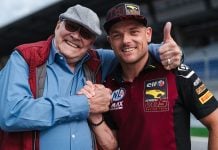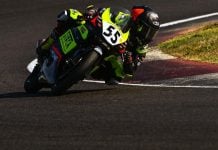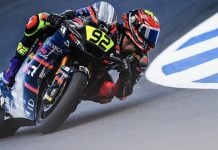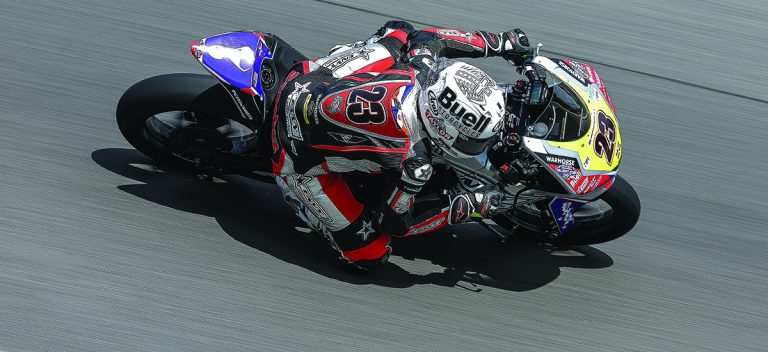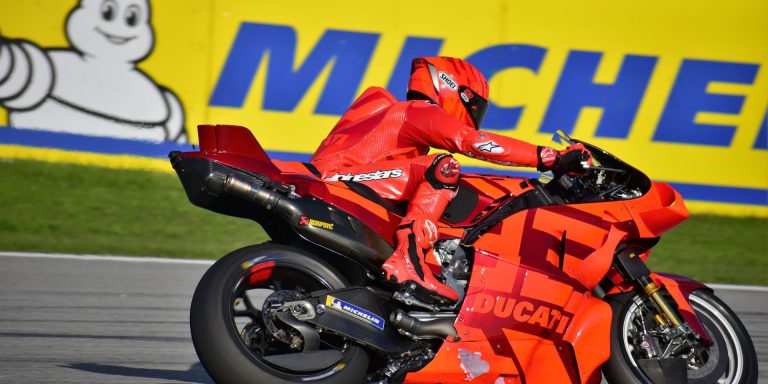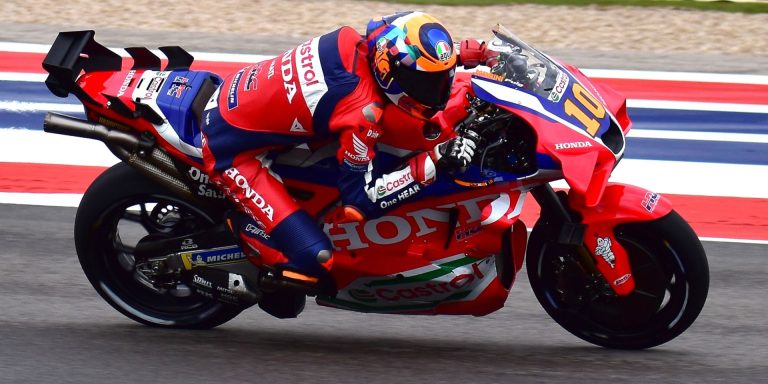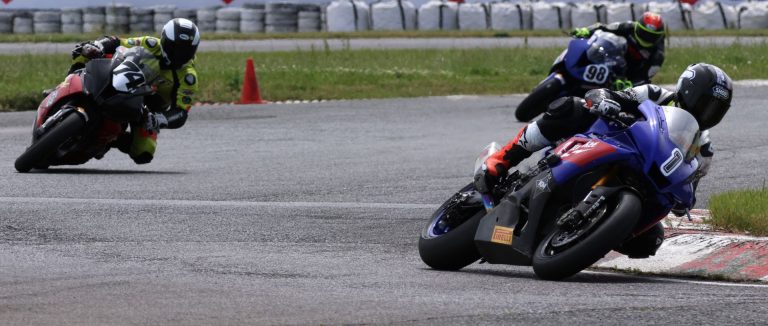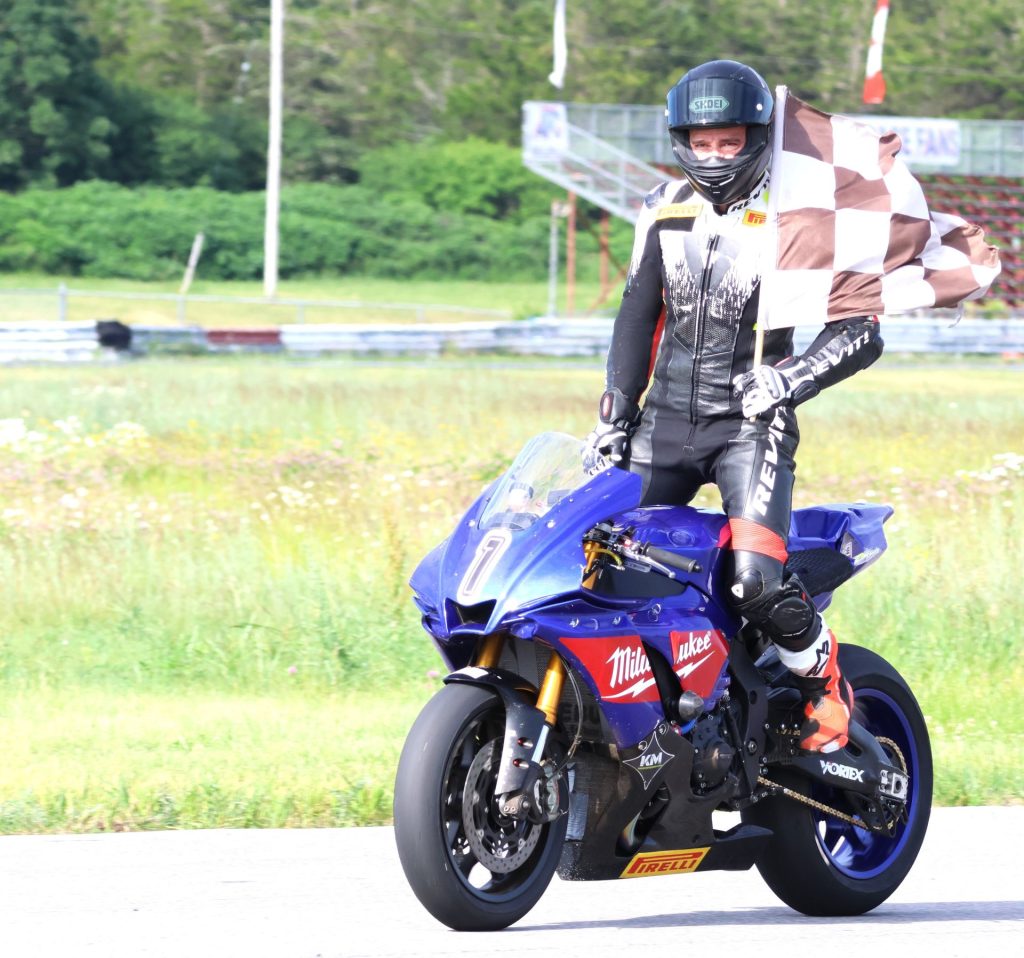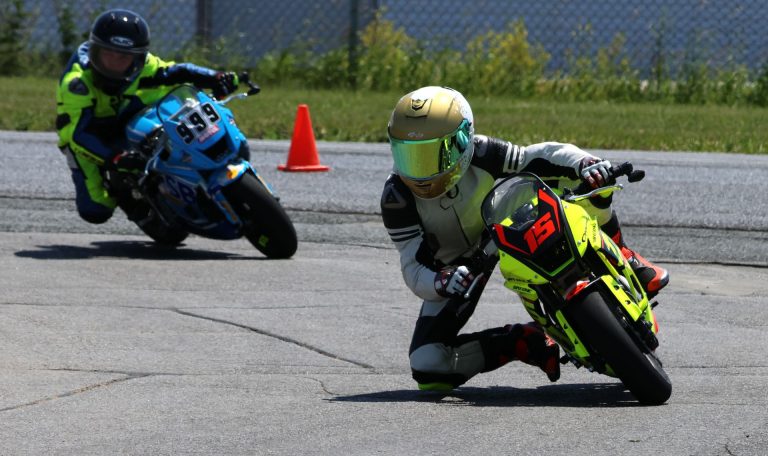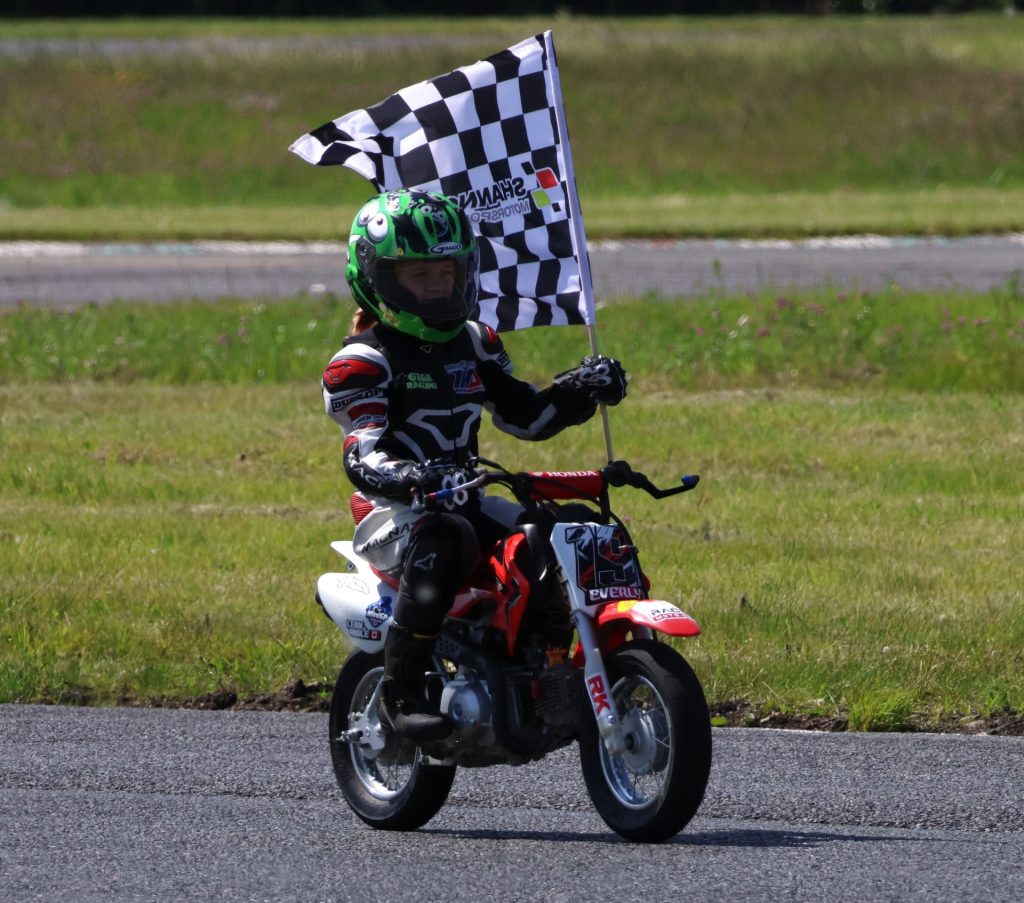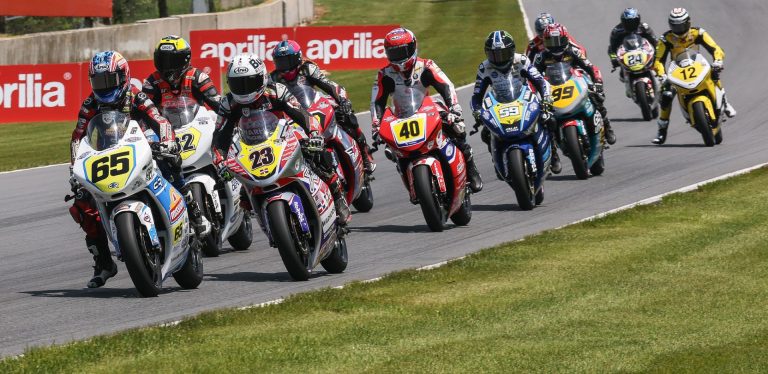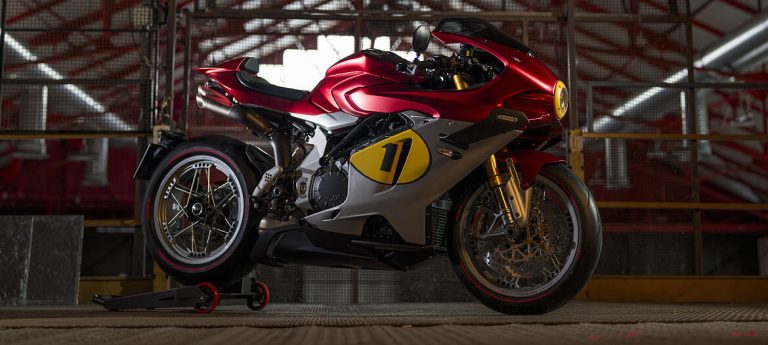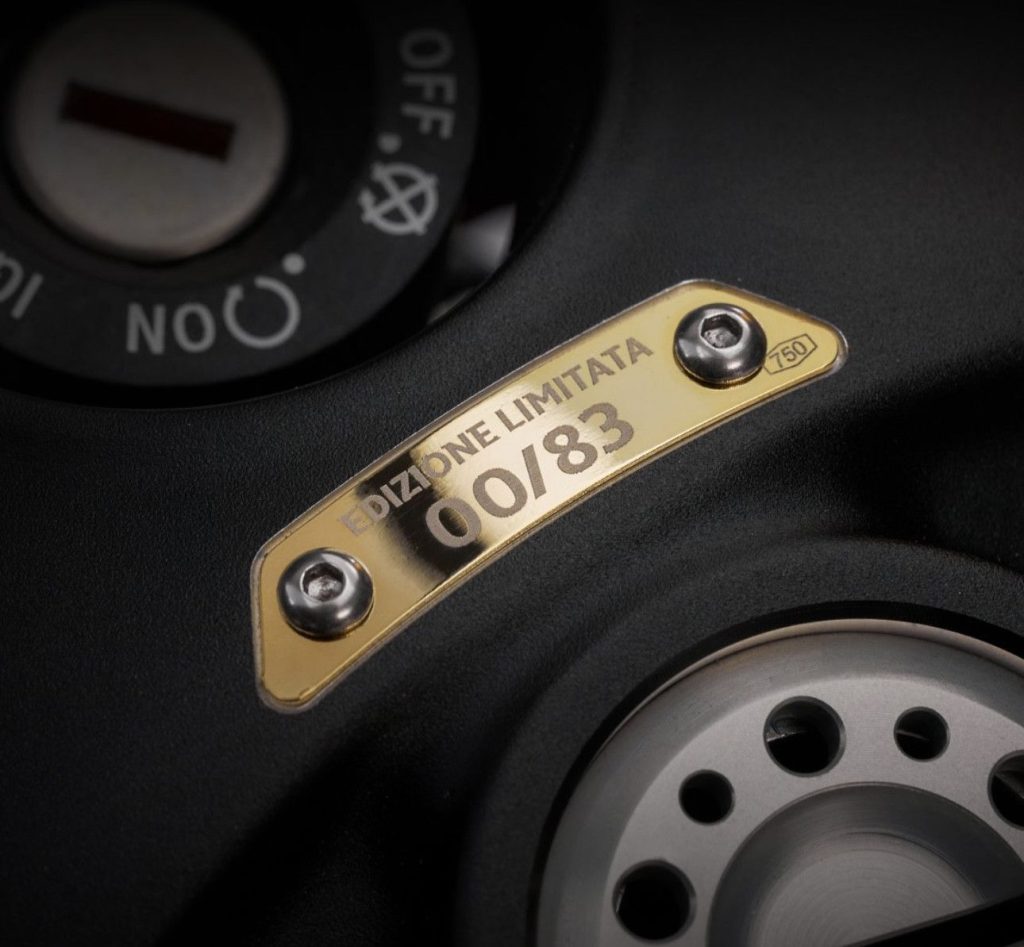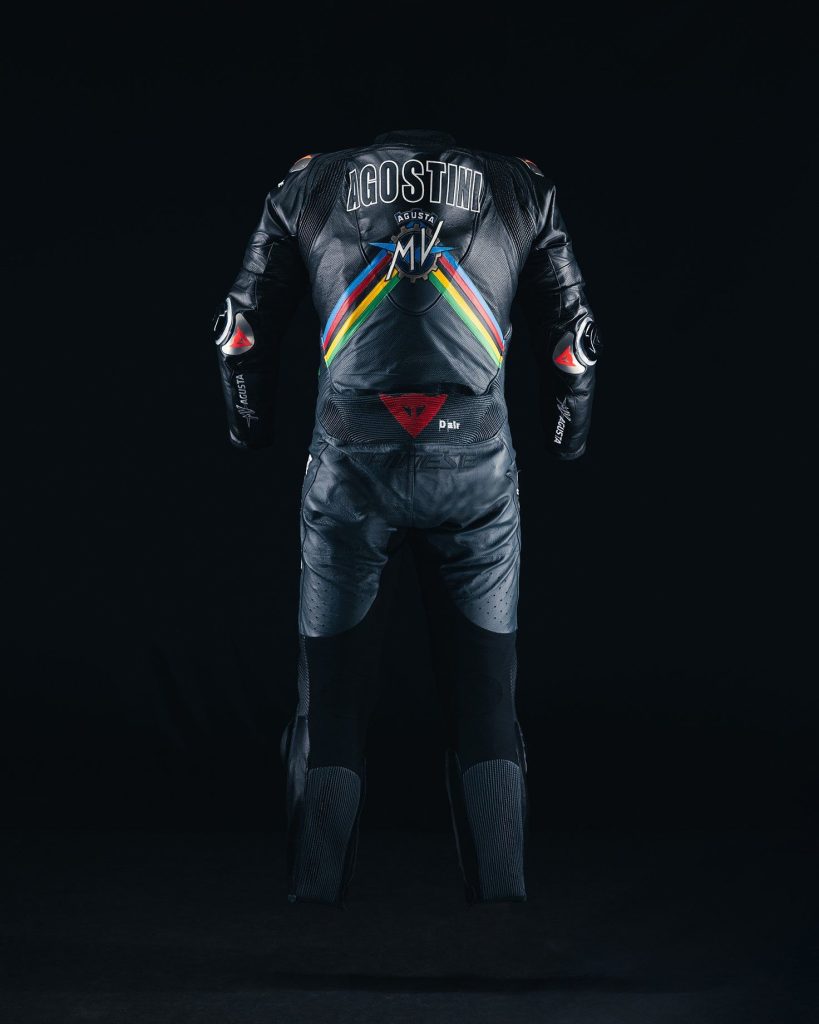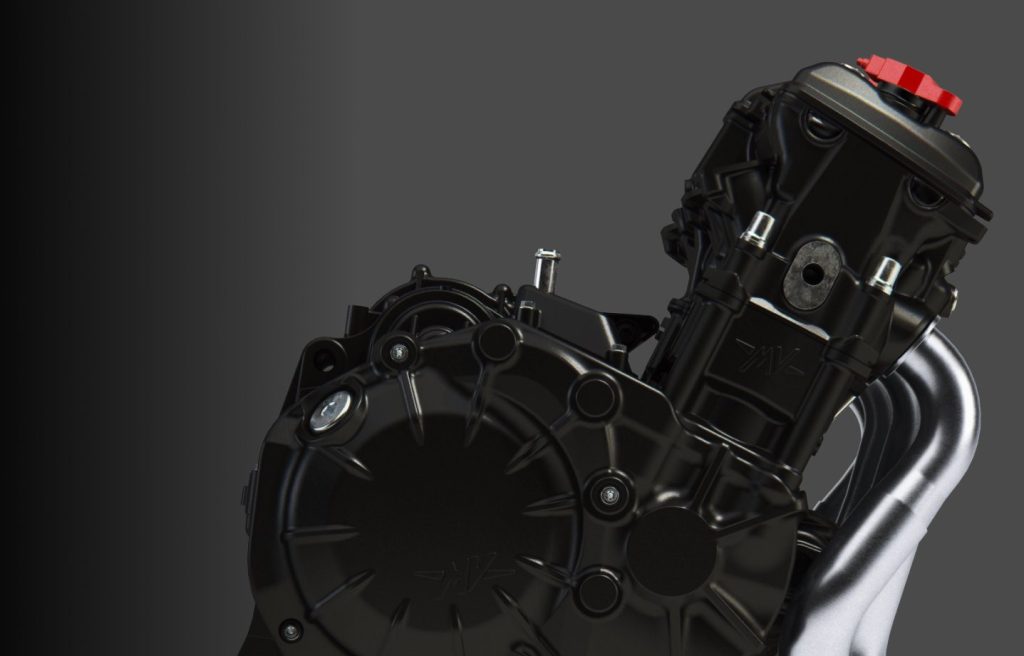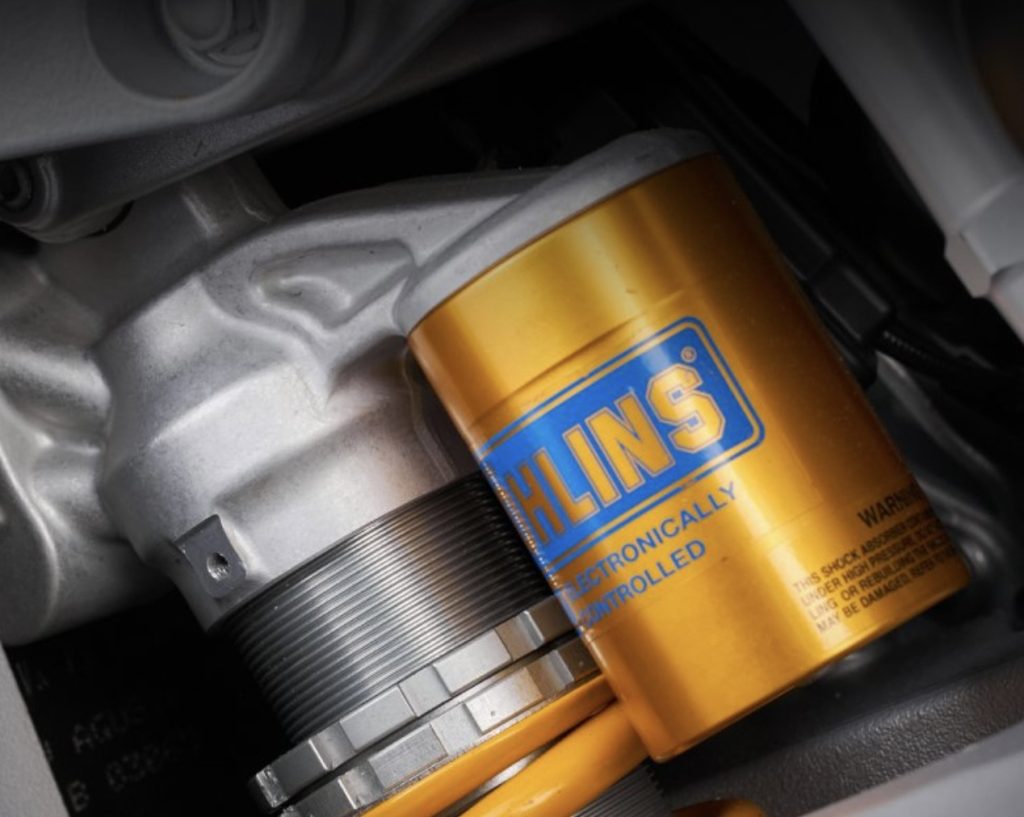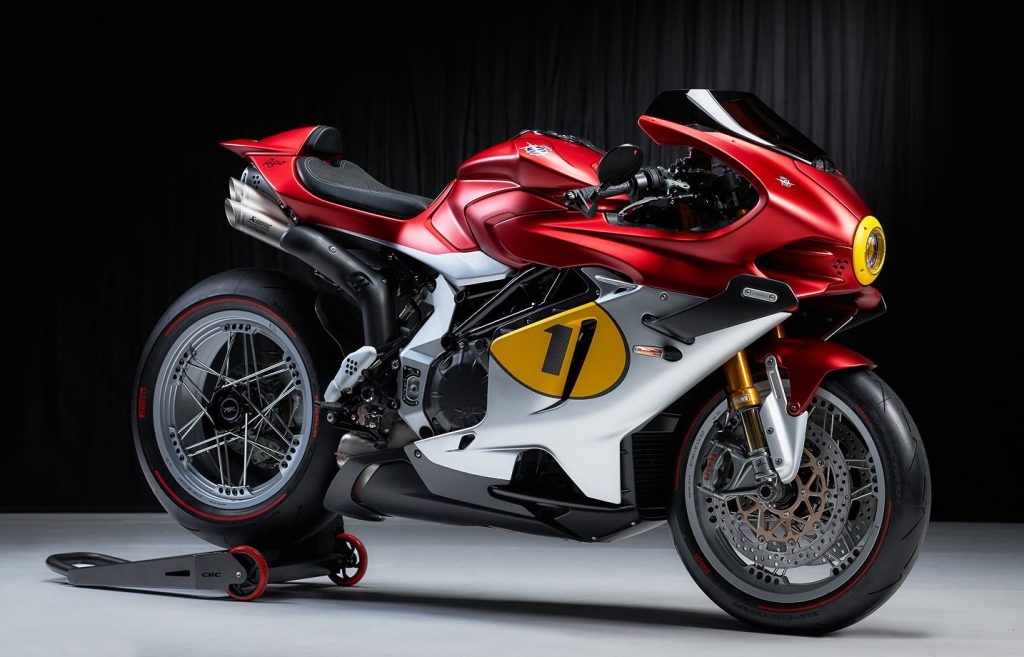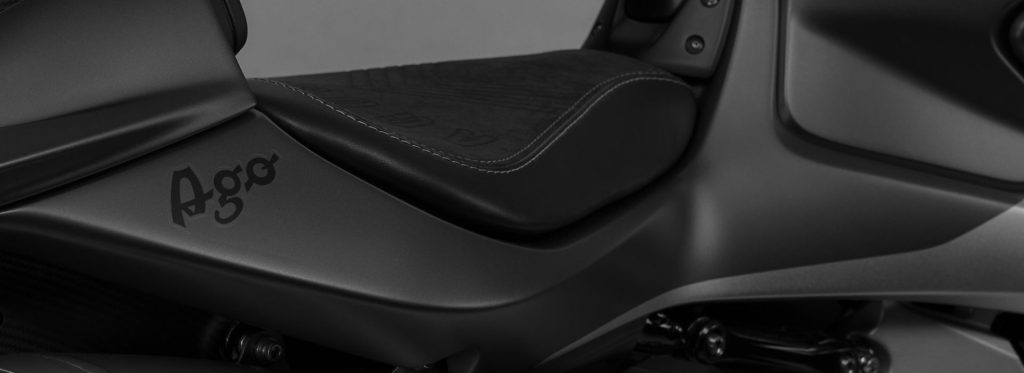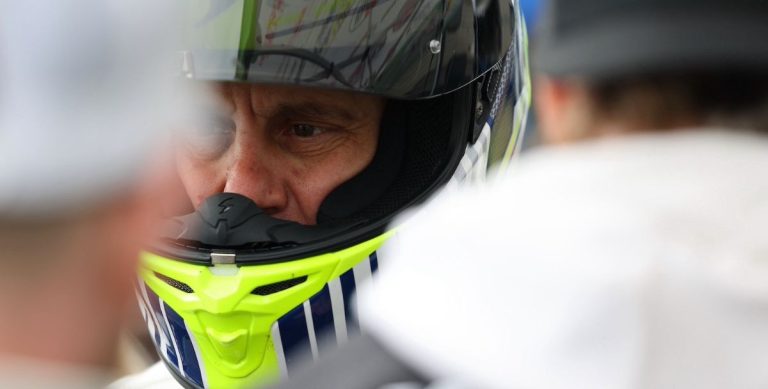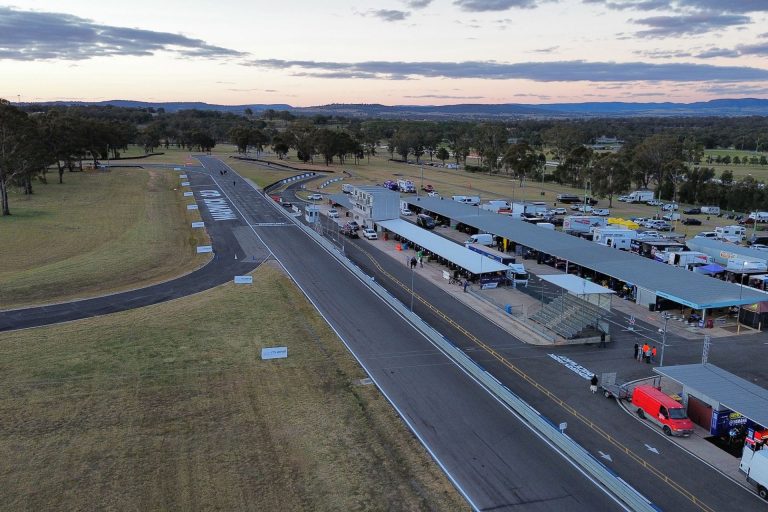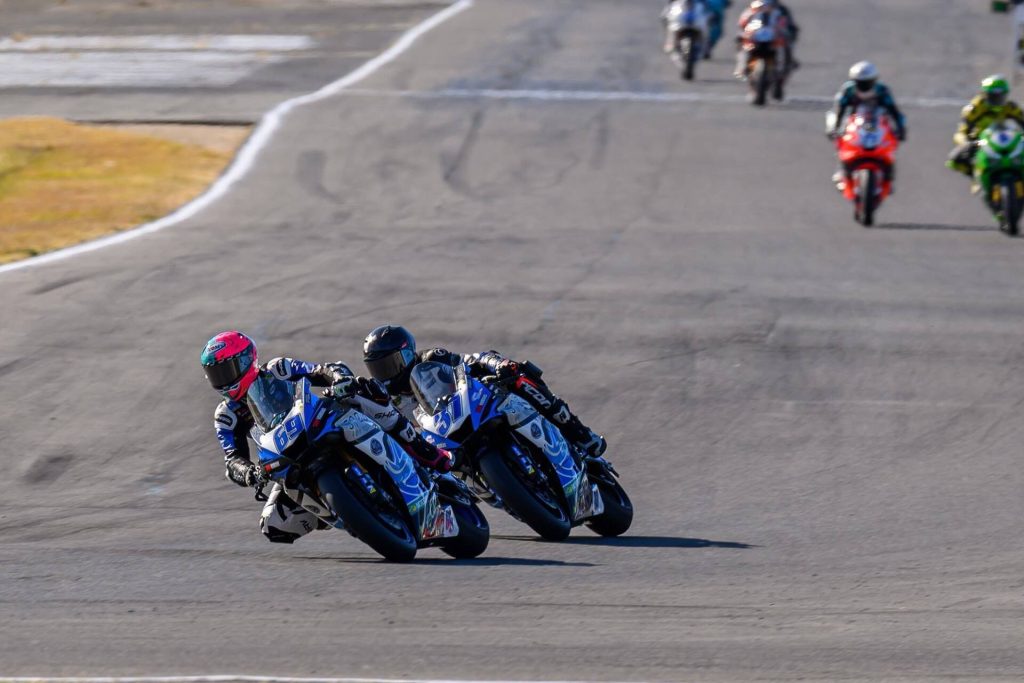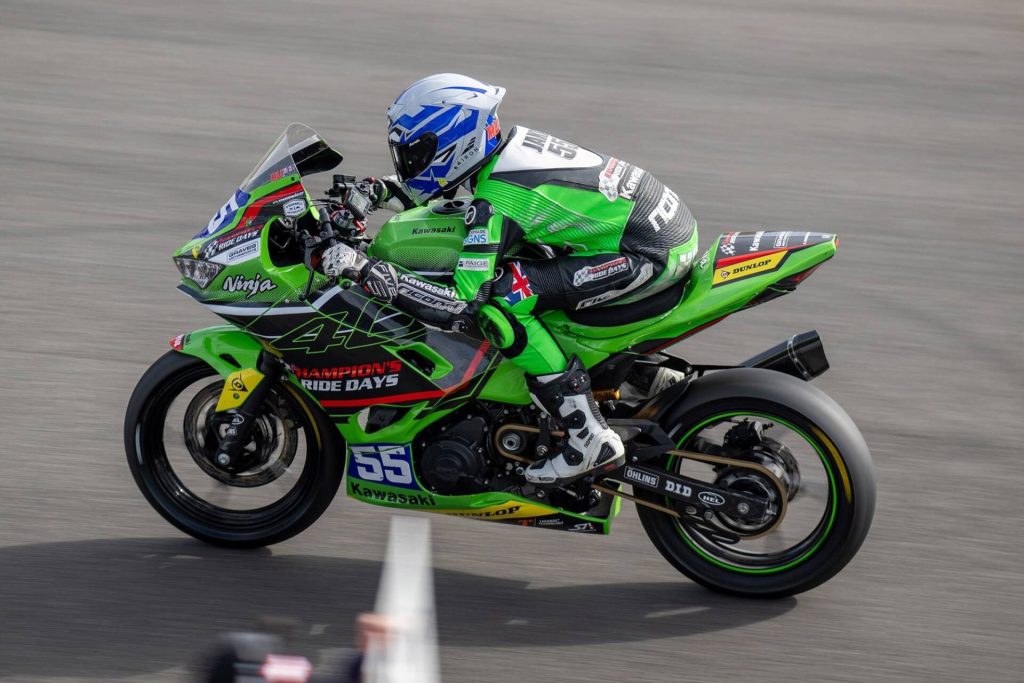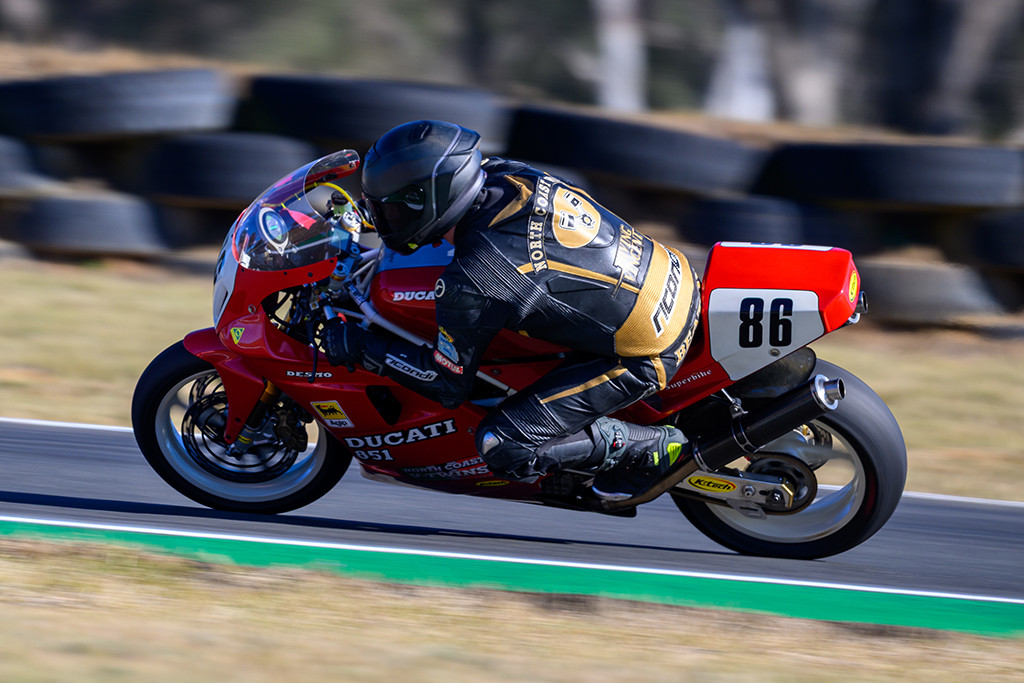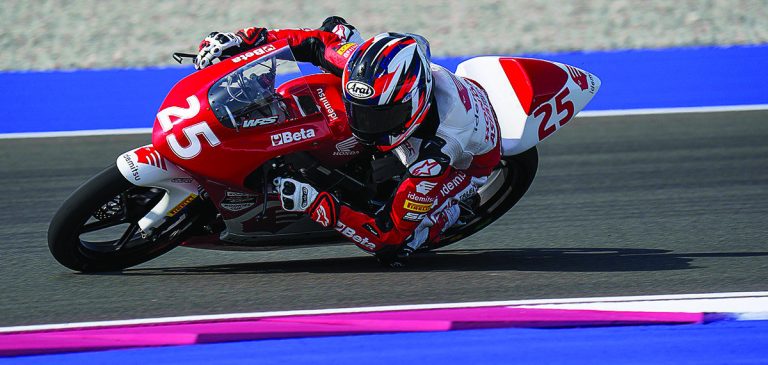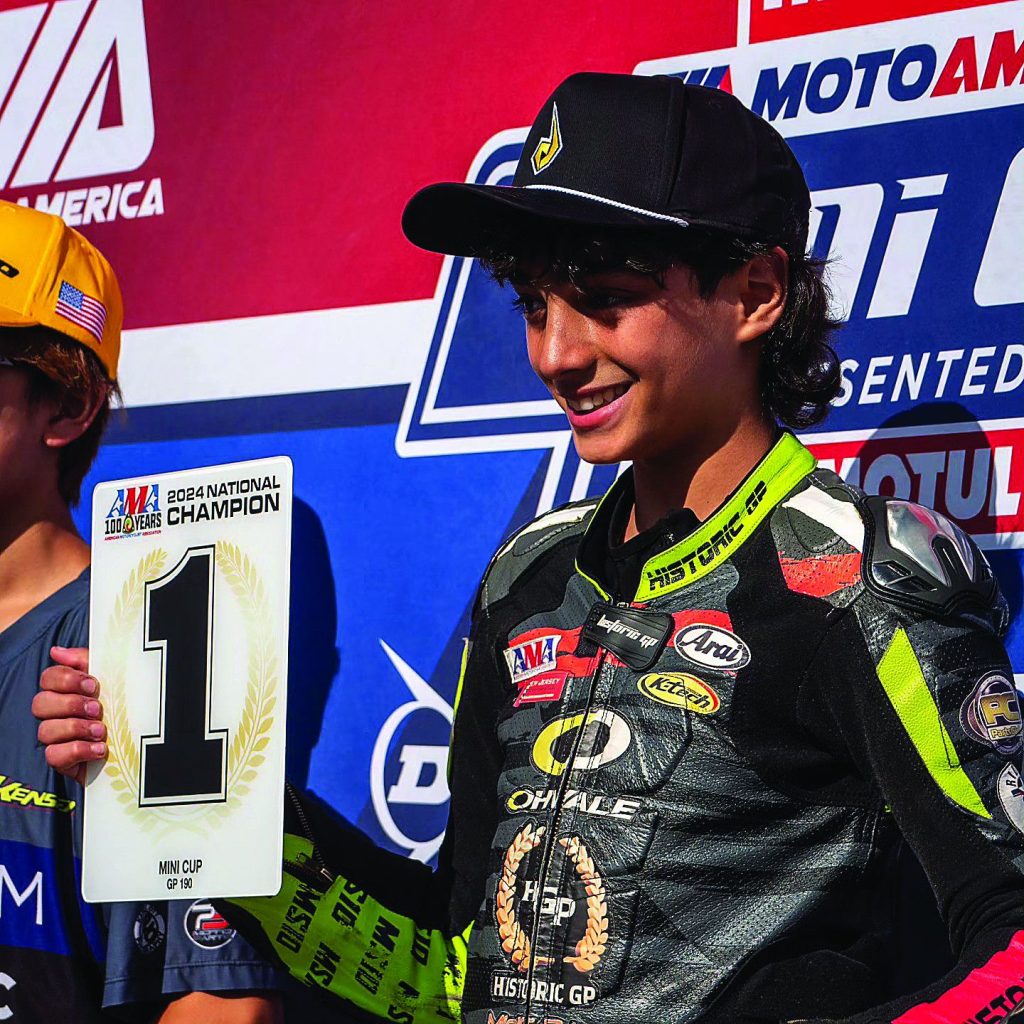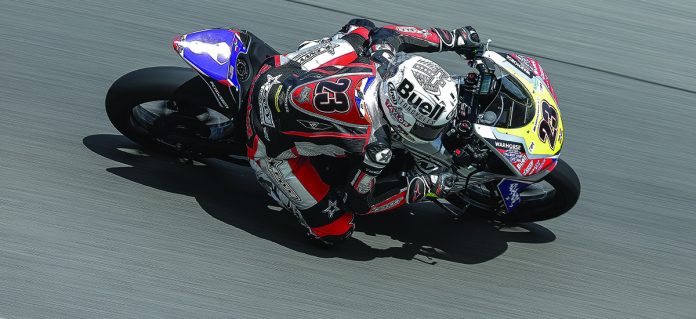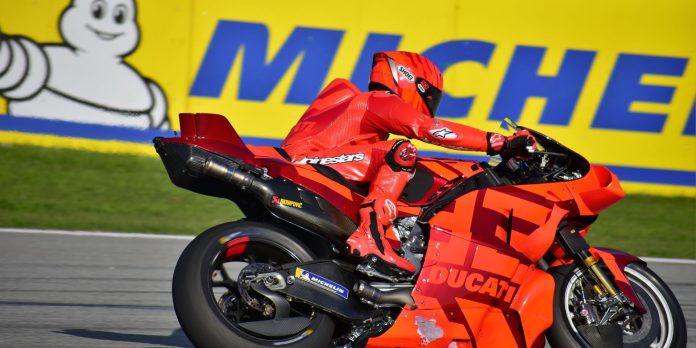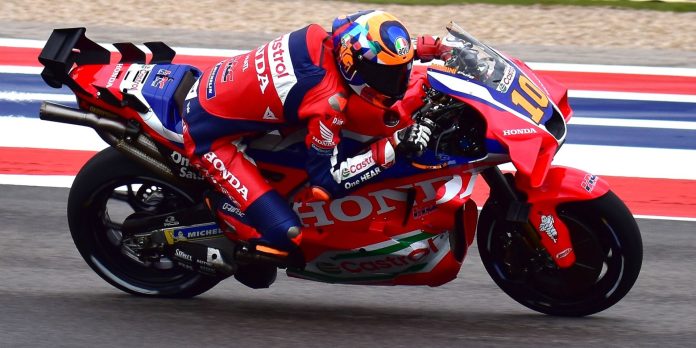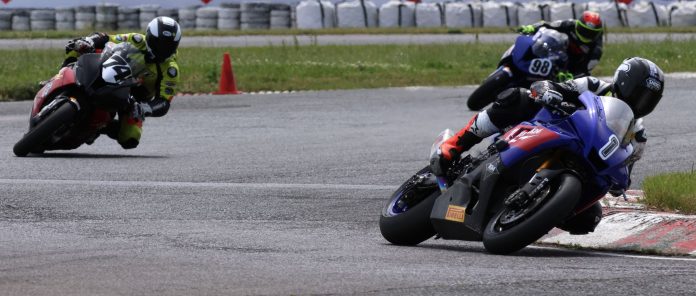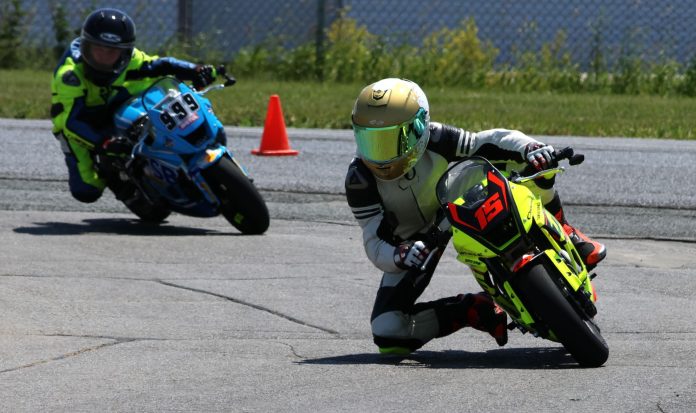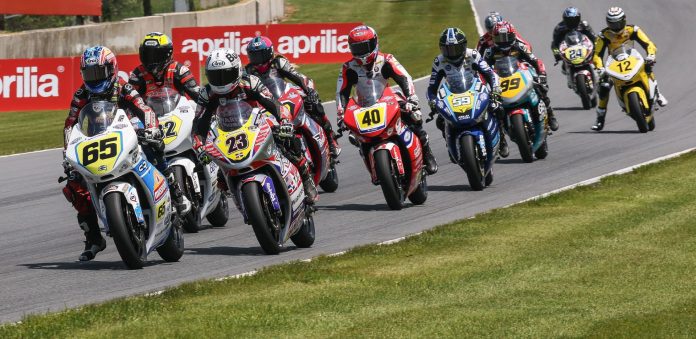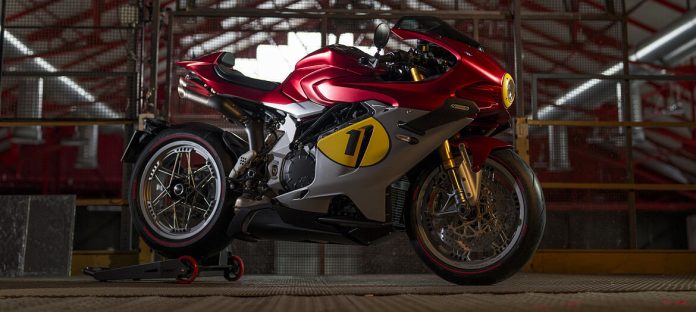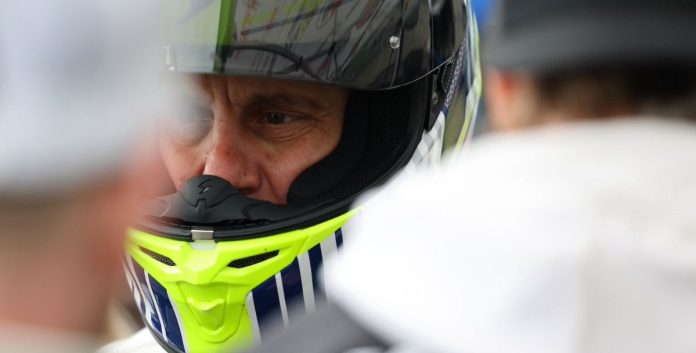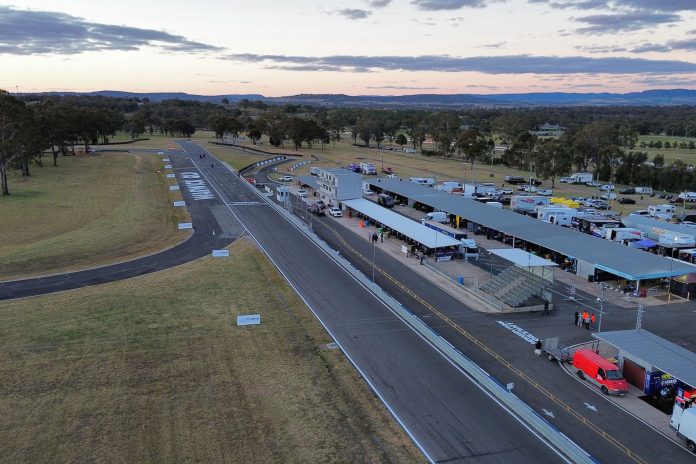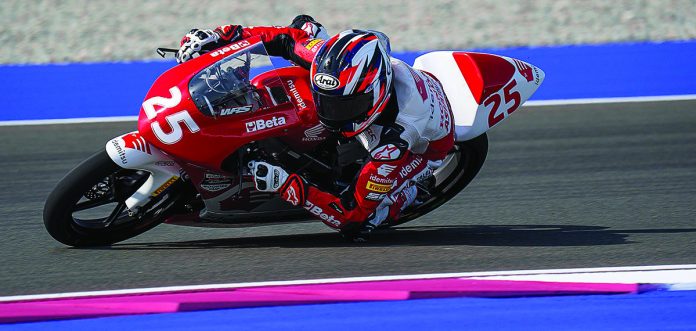Roadracing World started this exclusive special feature recognizing the most promising young road racers as an answer to pessimists who claimed America had no new, up-and-coming young racers. This edition of the Roadracing World Young Gun Awards marks the 29th consecutive year of showcasing an abundance of new talent.
Roadracing World Young Guns have won:
- FIM MotoGP and FIM Superbike races and World Championships;
- MotoAmerica and AMA Pro races and Championships, including 14 AMA Pro Superbike Championships;
- A KTM RC Cup World Final race;
- WERA National Endurance Championships and WERA National Challenge Championships; ASRA/Formula USA Grand National and CCS National Championships;
- AMA Road Racing Grand Championships and Horizon Awards;
- USGPRU National Championships;
- Many regional and local titles.
The competition has continually become more intense as more – and younger—racers with higher levels of accomplishment are nominated, and the level of achievement required to make the grade keeps getting tougher.
We’ve spent the last several months accepting nominations and evaluating road racers between the ages of 10 and 18 (as of the start of the 2025 season) who have, at a minimum, won Expert-level road races and/or Championships or had outstanding results as an Amateur/Novice. Most of the riders included here have done far more than the minimum.
The young riders recognized here are the most promising young road racers in North America, based on the 2024 season. All have earned the title of Roadracing World Young Gun.
We will feature one Young Gun per day, presenting them in alphabetical order.
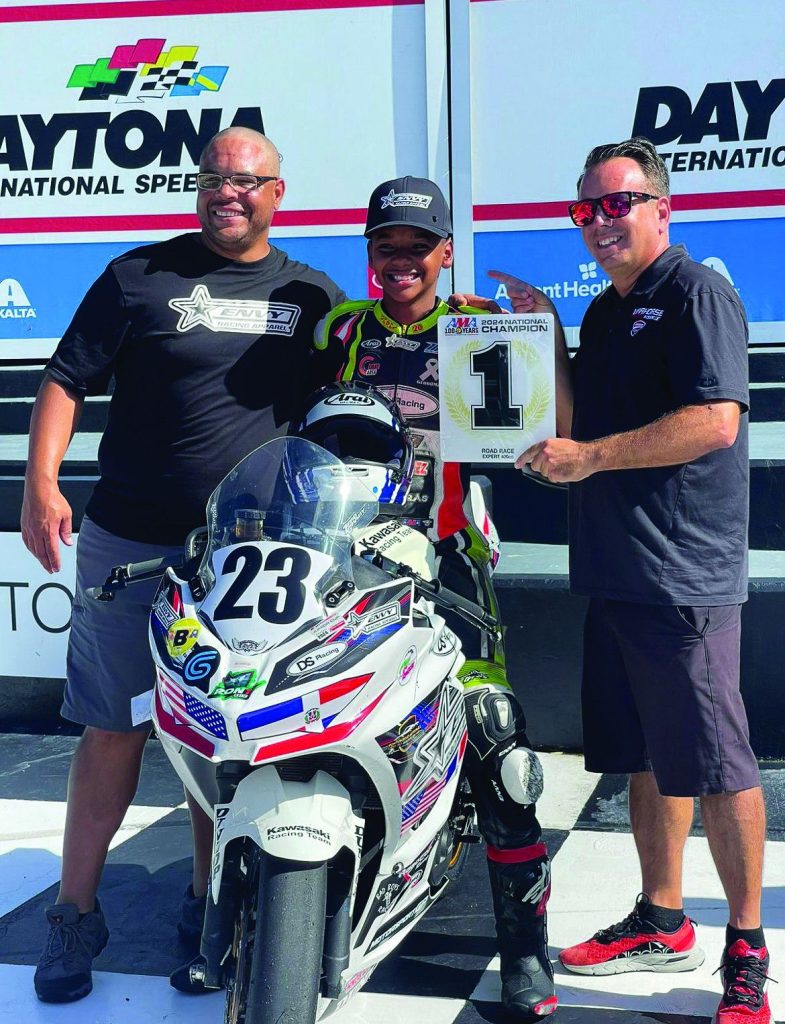
Derek Sanchez:
Age: 15.
Current home: Wilkes Barre, Pennsylvania.
Current height/weight: 5’8”/120 pounds.
Current school grade level: 8th grade.
Began riding at age: 4 years old.
First road race: 2016, Santo Domingo, Dominican Republic, PeeWee 50, 3rd place.
Current racebike: Kramer APX-350MA.
Current tuners/mechanics: Darwin Rodriguez, Jose Sanchez (father).
Primary race series: MotoAmerica Talent Cup.
Top sponsors: Envy Racing, The Warhorse Group, Buell Motorcycles, Vortex, Arai, Dunlop, Trackside Parts Club, Robocop Racing, Boston Road Auto Mall, Breakneck Speed Co., Race SMEC, Miles Auto NYC.
Recent racing accomplishments: 2024 season, won Nicky Hayden AMA Road Race Horizon Award, won AMA 400 Grand Championship, won ASRA 400 GP National Championship, finished 13th in MotoAmerica Junior Cup debut at Mid-Ohio; 2023 season, placed fourth in FIM Mini Cup Ohvale 190 Championship (one podium finish); finished sixth in MotoAmerica Mini Cup Ohvale 190 Championship.
2025 racing goal: Win MotoAmerica Talent Cup Championship.
Racing career goal: Race in Europe.
Racing hero: Nicky Hayden.
Favorite track: Daytona.
Favorite hobby: Playing sports.
If I wasn’t racing I would be…: Playing another sport like football or baseball.
…..
Some of the riders who have graduated from Young Guns and gone on to racing success in National or International series include:
2017 MotoAmerica Superstock 600 Champion Jason Aguilar (R.I.P.);
2013 AMA Pro SuperSport East Champion, 2022 MotoAmerica Stock 1000 Champion, and MotoAmerica Superbike podium finisher Corey Alexander;
AMA Pro Daytona SportBike race winner Tommy Aquino (R.I.P.);
2008 Red Bull MotoGP Rookies Cup Champion, two-time MotoAmerica Supersport Champion, and multi-time MotoAmerica Superbike race winner J.D. Beach;
Five-time MotoAmerica Superbike Champion and Moto2 World Championship point scorer Cameron Beaubier;
Former Canadian Sport Bike Champion Tomas Casas;
Three-time Canadian Sport Bike Champion and 2014 Canadian Superbike Champion Jodi Christie;
FIM JuniorGP World Championship point scorer and MotoAmerica podium finisher Torin Collins;
Former AMA Pro SuperSport East Champion and MotoAmerica Superstock 1000 race winner Josh Day;
2011 Daytona 200 winner Jason DiSalvo;
2014 AMA Pro SuperSport Championship runner-up and current MotoAmerica team owner Dustin Dominguez;
2018 MotoAmerica Junior Cup Champion, 2019 MotoAmerica Twins Cup Champion, and 2021 Canadian Superbike Champion Alex Dumas;
Four-time Pikes Peak International Hill Climb race winner and former motorcycle track record holder Carlin Dunne(R.I.P.);
Canadian Superbike race winner Bodhi Edie;
Two-time AMA Pro Daytona SportBike Champion, two-time AMA Pro XR1200/Harley- Davidson Champion and four-time Daytona 200 winner Danny Eslick;
2019 MotoAmerica Supersport Champion and multi-time MotoAmerica Superbike race winner Bobby Fong;
2010 Red Bull MotoGP Rookies Cup Champion, 2014 AMA Pro Daytona SportBike Champion, 2015 MotoAmerica AMA/FIM North America Superstock 1000 Champion, and three-time MotoAmerica Superbike Champion Jake Gagne;
Two-time MotoAmerica Supersport Champion and World Superbike podium finisher Garrett Gerloff;
2017 MotoAmerica Superstock 600 Championship runner-up Michael Gilbert;
2014 AMA Pro SuperSport Champion, 2023and 2024 MotoAmerica Stock 1000 Champion, and 2023 MotoAmerica King Of The Baggers Champion Hayden Gillim;
2002 AMA Superbike Champion and 2006 FIM MotoGP World Champion Nicky Hayden (R.I.P.);
2007 AMA Pro 600cc Supersport Champion, 2014 AMA Pro Superbike Championship runner- up, and 2017 MotoAmerica Superbike Championship runner-up Roger Hayden;
Eight-time AMA Pro Superbike race winner and two-time AMA Supersport Champion Tommy Hayden;
2013 AMA Pro Superbike Champion, 2016 MotoAmerica Superstock 1000 Champion, and 2022 MotoAmerica Supersport Champion, 2024 MotoAmerica Superbike Champion, and four-time Daytona 200 winner Josh Herrin;
MotoAmerica Supersport podium finisher Teagg Hobbs;
AMA Pro Superstock race winner Jake Holden;
2011 British Superbike Championship runner-up and former MotoGP and World Superbike regular John Hopkins;
2015 Supersport World Championship runner-up, 2019 and 2024 MotoAmerica Supersport Championship runner-up, and MotoAmerica Superbike race winner Patrick “P.J.” Jacobsen;
2021 MotoAmerica Supersport Champion, Moto2 World Championship point scorer, MotoAmerica Superbike race winner Sean Dylan Kelly;
Canadian Superbike race winner Kevin Lacombe;
Two-time MotoAmerica Junior Cup Champion, 2020 MotoAmerica Twins Cup Champion, 2022 MotoAmerica Supersport Championship runner-up, MotoAmerica King Of The Baggers race winner Rocco Landers;
Two-time MotoAmerica Stock 1000 Champion Andrew Lee;
2021 MotoAmerica Stock 1000 and Superbike Cup Champion Jake Lewis;
MotoAmerica Supersport race winner Sam Lochoff;
MotoAmerica Superstock 600 race winner Nick McFadden;
AMA Pro SuperSport race winner and MotoAmerica Supersport race winner Stefano Mesa;
Elena Myers, the first and only woman to win AMA Pro Supersport races;
AMA Pro XR1200 race winner, multi-time Loudon Classic winner, and two-time BRL Champion Shane Narbonne;
2012 Canadian Superbike Championship runner-up Andrew Nelson;
2016 MotoAmerica KTM RC Cup Champion, 2019 British Motostar (Moto3) Champion, MotoAmerica Supersport podium finisher, and two-time Daytona 200 winner Brandon Paasch;
2012 Daytona 200 winner and 2010 AMA Pro Supersport West Champion Joey Pascarella;
2016 MotoAmerica Superstock 600 Champion, MotoAmerica Supersport podium finisher, and powersports dealership owner Bryce Kornbau (nee Prince);
AMA Pro and Canadian National race winner and multi-time N2/WERA National Endurance Champion Chris Peris;
Two-time AMA Pro SuperSport National Champion, British Supersport podium finisher, 2020 AFT Production Twins Champion, and 2023 MotoAmerica King Of The Baggers Championship runner-up James Rispoli;
2015 MotoAmerica Superstock 600 Champion, MotoAmerica Supersport race winner, and Moto2 World Championship race winner Joe Roberts;
2022 MotoAmerica Junior Cup Championship runner-up and 2023 MotoAmerica Twins Cup Championship runner-up Gus Rodio;
2021 MotoAmerica Junior Cup Champion and multi-time MotoAmerica Supersport race winner Tyler Scott;
Former Red Bull AMA U.S. Rookies Cup Champion and former FIM Moto2 European Championship competitor Benny Solis, Jr.;
Three-time AMA Pro Superbike Champion, 2009 Superbike World Champion, MotoGP race winner, and AMA Motorcycle Hall of Famer Ben Spies;
FIM JuniorGP Moto2 European Championship regular Max Toth;
Multi-time AMA Pro race winner and four-time overall WERA National Endurance Champion Chris Ulrich;
MotoAmerica Supersport podium finisher, former World Superbike competitor, and 2024 MotoAmerica Stock 1000 Championship runner-up Jayson Uribe;
MotoAmerica Junior Cup race winner and current Supersport regular Max Van;
2017 MotoAmerica KTM RC Cup Championship runner-up, 2018 MotoAmerica Junior Cup Championship runner-up, and MotoAmerica Supersport podium finisher Cory Ventura;
Canadian Superbike race winner Alex Welsh;
Former AMA Pro Superbike Rookie of the Year, Chinese Superbike Championship race winner; MotoAmerica Supersport podium finisher, and 2024 MotoAmerica Super Hooligan Champion Cory West;
MotoAmerica Junior Cup race winner and 2024 MotoAmerica Superbike Cup Champion Ashton Yates;
Two-time AMA Pro Superbike Championship runner-up Blake Young.



